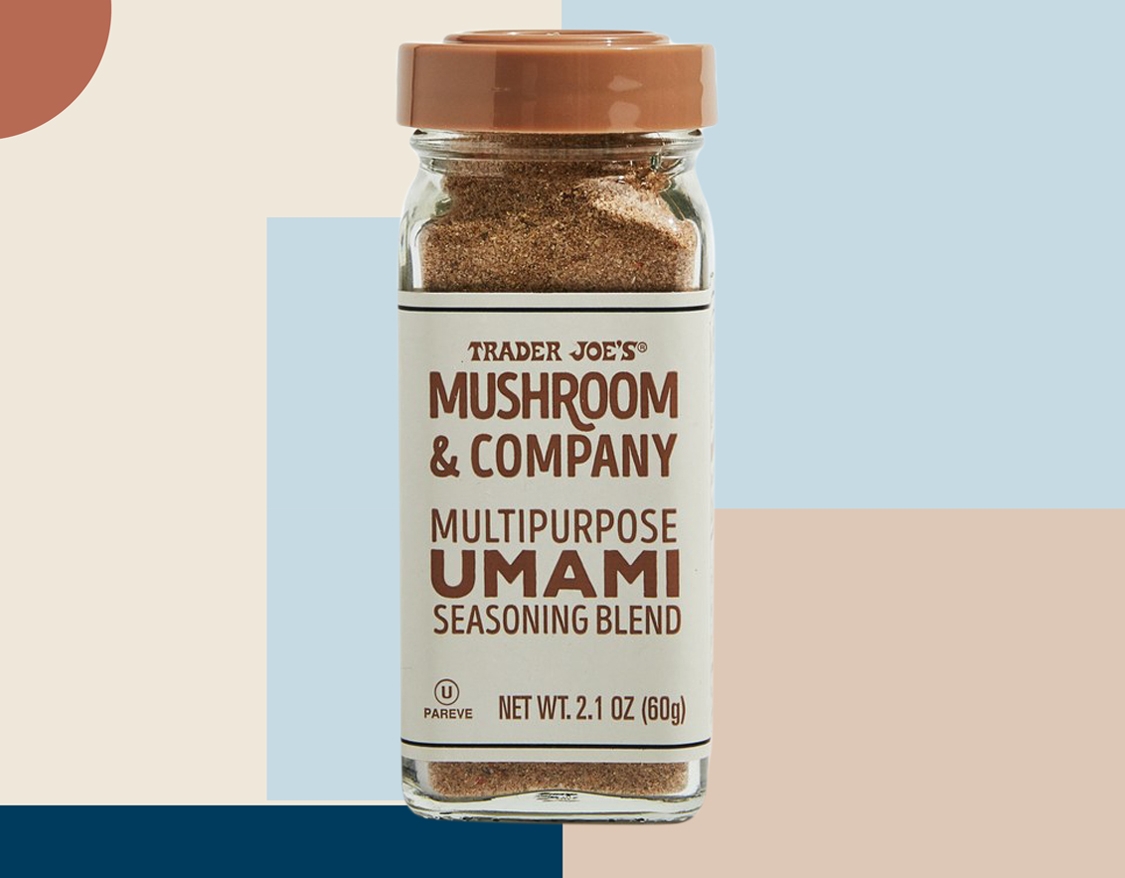
Imagery by Aaron Bengochea.
When I first heard about Trader Joe’s umami seasoning, I thought the retailer was trying to make some clever reference to a certain iconic scene in Friends. A seasoning purportedly able to alter your senses and make you more aware of your surroundings may be ethically dubitable, I thought, but you can’t fault TJ’s for originality. This is not the case. It turns out that while Multipurpose Umami Seasoning may be just another flavorful addition to your spice rack, it’s an inventive one with numerous purposes and it may just be poised to dethrone the perennial favorite Everything But the Bagel Seasoning.
The only problem is that it’s quite difficult to figure out how to cook with the spice. Each little bottle (which retails for $2.99) contains only an encouragement to “add a boost of savory flavor to just about any dish,” which sounds delightful but is hardly sound culinary advice. While the product was met with fanfare from various corners of the internet following its February 2019 launch, much of the narrative focused around confusion on just how to use the seasoning. As a self-professed brand devotee who worships at the church of Trader Joe’s, I was determined to crack the culinary code and figure out how to use this wunderspice. I picked up a shaker at the store and started researching.
First, I had to figure out exactly what umami is. According to the New Yorker, the term was first coined in the early 1900s by a Japanese chemist named Kikunae Ikeda. It describes the little-known “fifth taste,” something savory and almost earthy, best likened to the flavor of soup stocks. Aged Parmesan, ripe tomatoes, and soy sauce all have umami.
Trader Joe’s has infused its umami-laden spice with hints of mushroom. The ingredient list includes both porcini mushroom powder and white button mushroom powder, plus a medley of other supplements like dried onions and ground mustard seed. This versatile array of spices is why the seasoning lends itself so well to a variety of recipes—you can eat it at breakfast and dinner and still have two distinct-tasting dishes.
Convinced yet? Here are some easy ways to cook with umami seasoning.
Upgrade Your Eggs
Seasonings aside from salt and pepper are often woefully lacking in the everyday egg department. Give your scrambled eggs a face-lift by adding umami seasoning to the mix. In lieu of salt—kosher salt is the first ingredient in this seasoning, and yes, it’s truly very salty—whisk umami into your eggs. It’s a tiny addition that’ll pack a ton of flavor in. Take it up a notch with some melted white cheddar cheese and chopped pancetta if you’re feeling gourmet.
Elevate Your Condiments
There are myriad reasons to keep compound butter on hand, and they all center around how much better it makes everything taste. Roast potatoes are but a cooked tuberous crop without it. Vegetables are somehow even more boring without it. Steaks are too expensive to go without it.
The great news is, compound butter is super easy to make: simply soften your desired amount of butter to room temperature, and mix with umami seasoning to suit your taste. For reference, I mixed half a stick of butter with about three shakes. Using cling film, roll up the butter into a tube-like shape, then refrigerate until it re-hardens. When you’re ready to use, slice off a disk at the end to upgrade almost any dish.
Roasted Vegetables With a Twist
I tried the umami seasoning with roasted veggies as an amped-up take on my usual olive oil–and–sea salt combination, and it was truly delicious. I tested it with a couple of different vegetables—green beans and broccoli—each of which was wonderful. The key here is to make sure everything is evenly coated, so buy your vegetables fresh and ensure they’re totally dry before sprinkling them liberally with the umami seasoning. Then, drizzle some olive oil on top, mix in a couple of chopped cloves of garlic, and pop the tray in a 400-degree oven to roast.
Use It for Meal Prep
Having roast chicken on hand for the week is a lifesaver when it comes to meal prepping. I switched up my normal seasoning with umami and it made for a flavorful final product; something about the mushroom interacting with the other spices makes it perfect for poultry. Toss chicken breasts in a bowl with olive oil and umami spice (again, since it’s replacing salt, be liberal with how much of the seasoning you use), then bake in a 400-degree oven for about 25 minutes or until a meat thermometer registers 165 degrees. If you plan, you’ll have more than enough to use throughout the week in grain bowls or salads.
Elly Leavitt is an Associate Digital Editor at Domino.